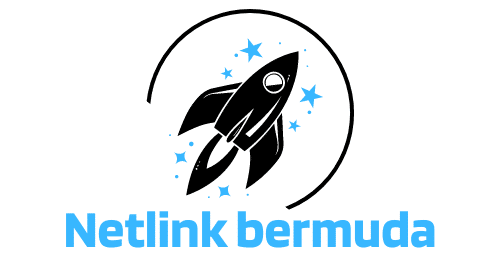From the inception of the first programming languages, software development has evolved beyond imagination. Today, we live in an era where the speed of software delivery is deemed as much important as the quality of the final product. This is where Continuous Integration and Continuous Deployment (CI/CD) come into play.
Given the popularity and extensive use of Python as a programming tool, we are going to take a closer look at how you could integrate Travis CI into your Django application for continuous deployment. This process enhances the application’s functionality, optimizes the development process, and helps you maintain a consistent codebase.
Lire également : What are the steps to set up a CI/CD pipeline using CircleCI for a Python project?
What is Travis CI?
Before we dive into the integration process, it is crucial to understand what Travis CI is and how it works. Travis CI, which stands for Continuous Integration, is a popular, open-source platform used for automating build and testing of applications hosted on GitHub.
Travis CI works by running your program’s tests every time you make a change to your code and push it to GitHub. The results of these tests are then relayed back to the team, enabling them to detect and rectify any issues swiftly and effectively. This way, the platform ensures that the code in the repository is always in a deployable state.
A lire en complément : How do you configure a high-availability PostgreSQL cluster using Patroni?
Setting Up Your Django Environment
Before you can start using Travis CI for your Django application, you must first set up your Django environment. This involves creating your Django application and installing the necessary dependencies. The first step to do this is by installing Django and creating a new Django project. If you’re new to Django, it’s a high-level Python web framework that enables rapid development of secure and maintainable websites.
To install Django, you can use pip, which is Python’s package manager. Below is the command:
pip install django
To create a new Django project:
django-admin startproject myproject
Once you have your Django project, you need to create a requirements.txt file that lists all the Python packages that your Django application depends on. You can create this file manually, but a better approach is to use pip freeze, which generates a list of all installed packages and their versions.
pip freeze > requirements.txt
Integrating Travis CI with your Django Application
Now that your Django application is up and running, it’s time to integrate Travis CI into it. The first step here is to create a .travis.yml file in your repository’s root directory. This file will instruct Travis CI on how to build and test your application.
Here is a sample .travis.yml file for a Django application:
language: python
python:
- "3.6"
install:
- pip install -r requirements.txt
script:
- python manage.py test
The language key tells Travis CI that this is a Python project. The python key specifies the Python version that Travis CI should use to run your tests. The install key instructs Travis CI to install the dependencies listed in your requirements.txt file. Lastly, the script key provides the command that Travis CI should run to execute your tests.
Once you’ve created the .travis.yml file, you can push it to your GitHub repository. Travis CI will detect the new file and will start running your tests every time you push to your repository.
Deploying Django Application with Heroku and Travis CI
After Travis CI has been successfully integrated with your Django application, it’s time to set up continuous deployment. For this, we’ll be using Heroku, a cloud platform that allows applications to be deployed with minimal configuration.
The first step is to create a Procfile in the root directory of your Django project. This file tells Heroku which command to run to start your app.
Here is a sample Procfile for a Django application:
web: gunicorn myproject.wsgi --log-file -
Next, you need to set up the Heroku command line interface on your local machine and log in:
heroku login
Once logged in, you can create a new Heroku app:
heroku create myapp
Now you can add the Heroku repository as a remote to your local git repository:
git remote add heroku https://git.heroku.com/myapp.git
And finally, you can modify your .travis.yml file to deploy your Django application to Heroku:
deploy:
provider: heroku
api_key:
secure: YOUR_API_KEY
app: myapp
With this, every time you push your code to GitHub, Travis CI will automatically run your tests. If the tests pass, Travis CI will then deploy your Django application to Heroku.
Continuous integration and deployment are vital parts of modern software development. Using Travis CI with your Django application can streamline your development process, help catch bugs early, and ensure your code is always in a state ready for deployment.
Maintenance and Best Practices for Continuous Deployment
Now, your Django application is in a state of continuous integration and deployment thanks to Travis CI and Heroku. However, it is not enough to just implement these processes; maintaining them is equally important. Continuous deployment is not a one-time setup but a culture of maintaining a deployable state of your application. It requires continuous monitoring and frequent updates to ensure your application remains error-free and in-line with the latest software development standards.
One best practice for maintaining continuous deployment is regularly updating your requirements.txt file. As your Django application grows, you might require new Python packages or newer versions of existing ones. You should promptly update your requirements.txt file to reflect these changes. Similarly, always update the python key in your .travis.yml file when you switch to a newer Python version.
An important aspect of maintaining continuous deployment involves managing your environment variables effectively. Your Django application might require certain environment variables to function correctly. These could include variables like DATABASE_URL, API_KEY, or other access keys. You should manage these variables securely and ensure they are correctly set in both Travis CI and Heroku.
You also need to regularly monitor the results of your tests run by Travis CI. The whole point of continuous integration is to catch bugs early. If you ignore test results, you might miss out on catching crucial bugs, which could lead to larger issues down the line.
In this post, we have explored how to implement continuous deployment for a Django application using Travis CI. You learned how to set up a Django environment, integrate Travis CI with your Django application, and use Heroku for continuous deployment.
Remember, the key to successful continuous deployment lies in the maintenance of the process and adherence to the best practices. These include keeping your requirements.txt and .travis.yml files updated, managing your environment variables securely, and taking your Travis CI test results seriously. Following these practices will ensure smoother deployments and an overall efficient development process.
To wrap this up, it’s clear that continuous deployment with Travis CI is an excellent approach for Django applications. It not only enhances efficiency but also ensures the application is always in a deployable state. This, in turn, allows for quicker deliveries and high-quality software products, keeping in line with modern software development standards. Today’s post documents the implementation of these strategies in detail, thereby enabling you to apply the same to your Django applications. So, go ahead and take your Django applications to the next level with Travis CI and Heroku. Remember, in the world of software development, the continuous deployment of your web app is not just a trend, but a necessity.











